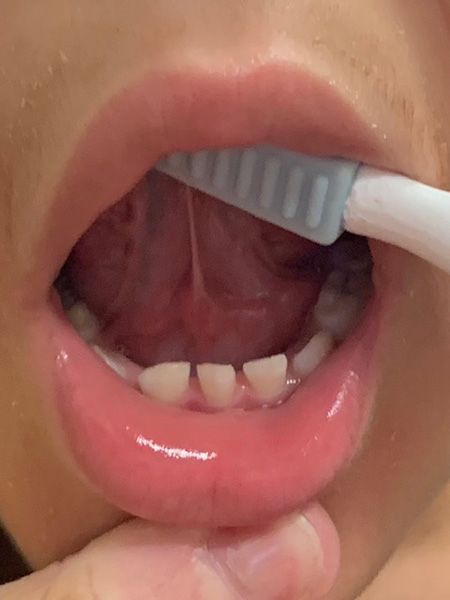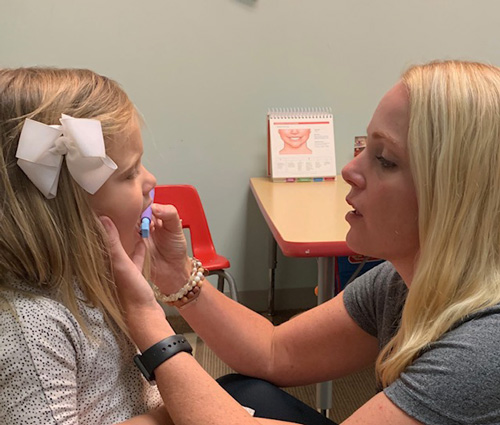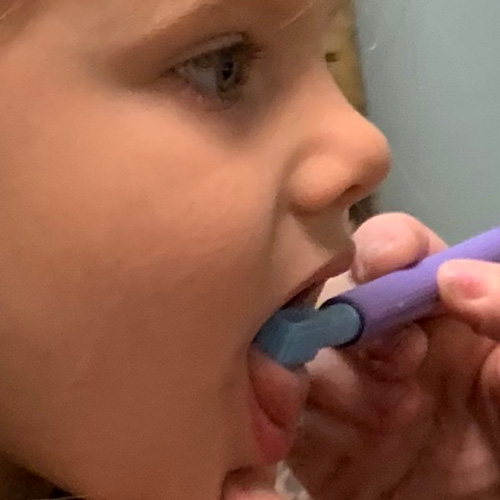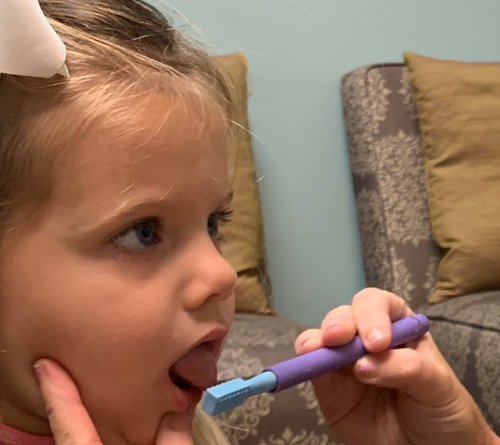5 Ways to Easily Assess Tongue-Ties Using ONE Simple Tool
Posted by Guest Blogger Susannah Silvia, MCD, CCC-SLP on 21st Aug 2019
This helpful guest blog post is courtesy of Susannah Silvia, MCD, CCC-SLP.
The term tongue-tie has been thrown around a lot lately in homes and in therapy clinics. With all the different names, effects, and treatments, speech-language pathologists and parents are often left confused in their own role of diagnosing.
.
Tongue-tie, or ankyloglossia to the medical field, is not a newly discovered condition but has been recently discussed more frequently. This new interest is driven by the current research and awareness in the importance in breast-feeding. The Mayo Clinic definition of tongue-tie: a condition at birth that restricts the tongue’s range of motion. There is a tight, short, or thick band of tissue (lingual frenulum) that tethers the bottom of the tongue’s tip to the floor of the mouth. This restriction causes difficulty with tongue movements needed for many important functions.
.
Recent articles, presentations, and posters have indicated that a tongue-tie can affect the way an individual eats, speaks, swallows and can interfere with breastfeeding.
.
The first step to determining if your child has a tongue-tie is to visually assess the tongue's appearance and function by using proper positioning, good lighting, and ARK's Z-Vibe®. This tool is the perfect vibrating oral motor tool for speech therapy, feeding therapy, and sensory stimulation. It is handy for providing tactile oral cues and directing the articulators. There are over 25 tip attachments that serve various functions. For viewing the lingual frenulum, I use the blue probe attachment. The blue probe is standard and comes with the Z-Vibe.
.
FOR INFANTS:
The lingual frenulum is easier to view by placing the infant on your lap with head towards you. Use your fingers instead of tools to direct the tongue in various positions.
.
FOR TODDLERS AND OLDER CHILDREN:
As children get older, it can become fairly difficult to view the lingual frenulum, especially if there are sensory issues. As a general rule, start by using the Z-Vibe in the off position (without vibration) in case there may be any oral sensitivities. If extra input is need to increase oral awareness to help the child move the muscles in his/her mouth, you can turn the Z-Vibe on to vibrate.
.
To get started, position your child in a chair with you sitting on the floor. Your eyes should face directly towards their mouth. (Note: the child in the following pictures does not have a tongue tie.)
.

.
1. Using the blue probe on the Z-Vibe, gently lift the tongue to examine the lingual frenulum while the child's mouth is open, as shown above. If your child has difficulty opening his or her mouth, have him or her bite down on a second Z-Vibe (or a chew tool). This keeps the mouth open. Look for any restrictions with visible pulling at any location of the tongue. The frenulum may be thin with a white color.
.

.

.
2. With the Z-Vibe, push the tongue back towards the throat with the blue probe, as shown above. Inspect elasticity, color, and location. Look for a heart shaped tongue tip when the tongue moves back with a thick bulgy presentation, as this is a sign of a tongue tie.
.
3. Using the blue probe tip (bumpy side down), stroke the side of the tongue from back to front to facilitate lateral tongue movements to inspect range of motion needed for chewing. When placed on the molar area, have your child chew on this probe. This is great for viewing any tongue restrictions with the movements required for chewing. The tongue tip should touch the molars easily.
.

.
4. Hold the blue probe just outside the mouth (as shown above). Have your child touch it with his or her tongue tip to facilitate protrusion. Assess the tongue's length, shape, and midline indention. Look for a heart-shaped tongue tip with limited ability to stick out tongue passed lower lip. A thick midline tongue groove may also be an indication of a tongue-tie.
.
5. Stimulate the roof of his or her mouth with the blue probe dipped in something sticky (like nutella, yogurt, etc., allergies permitting of course). This will facilitate tongue elevation for further examination of the lingual frenulum.
.
If you suspect that your child has a tongue-tie and he or she has difficulty breastfeeding, chewing, and/or producing certain sounds, consult with a speech-language pathologist, dentist or an ENT who has experience with tongue-ties.
.
Susannah Silvia, MCD, CCC-SLP
.
Susannah Silvia, MCD, CCC-SLP, is the clinical director of an interdisciplinary outpatient facility, Beyond Therapy for Kids, in Ridgeland, Mississippi, and specializes in early language disorders, severe articulation disorders, oral motor and feeding issues. She is also an adjunct professor at Jackson State University in Mississippi teaching Early Intervention and Craniofacial Abnormalities/ Syndromes. Follow her on Instagram @thesouthernbabble or reach her at susannah@thesouthernbabble.com
.

